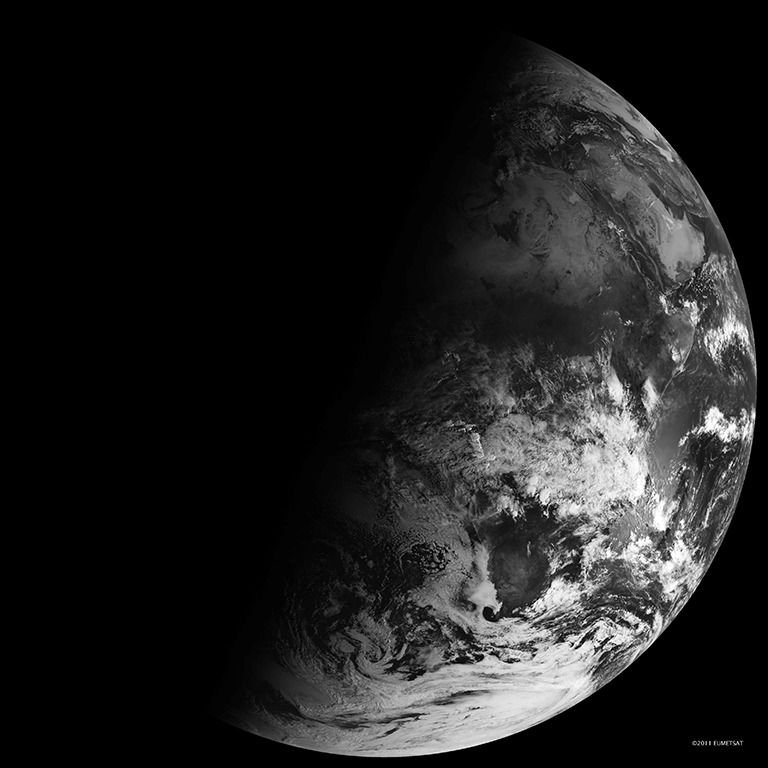Ask NASA Climate | December 12, 2016, 06:02 PST
Winter solstice: During the longest night, NASA also observes the light

The winter solstice as seen from the Spinning Enhanced Visible and Infrared Imager (SEVIRI) on EUMETSAT's Meteosat-9. NASA images and animation by Robert Simmon.
Leaves blown in by a strong wind lay scattered across the foyer of the building where I work. The skies are greyer, and the sun’s rays lay low in the late afternoon. The world is quietly exhaling.
In the stillness of winter solstice, that time of year when days are shorter and nights are longer, when the Earth’s Northern Hemisphere is as tilted away from the sun as it will ever be, I let the cold starkness surround me like a blanket.
In this moment, time seems to stand still, even as Earth continues its enduring revolution around our star. Even as seasons blend into each other year after year after year.
In this moment, I reach out to you, NASA reaches out to you. We are connected. Together we breathe, together we watch our world, together we look forward to the green shoots that make their way up through the soil. Because remember, after the longest of dark nights always comes the spring.
Laura
Find out more about equinoxes and solstices here.
